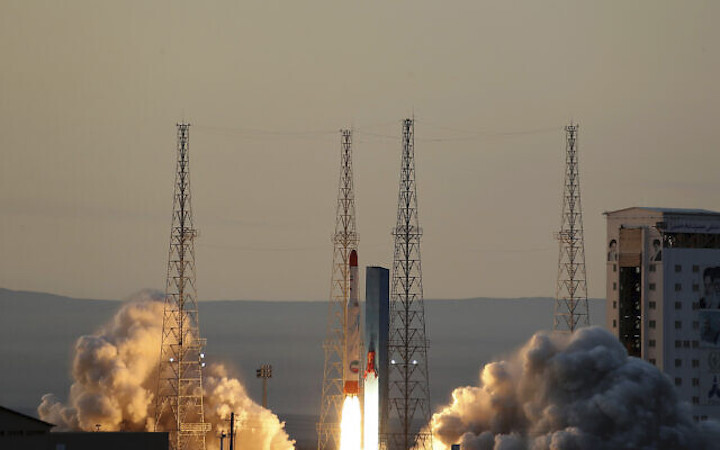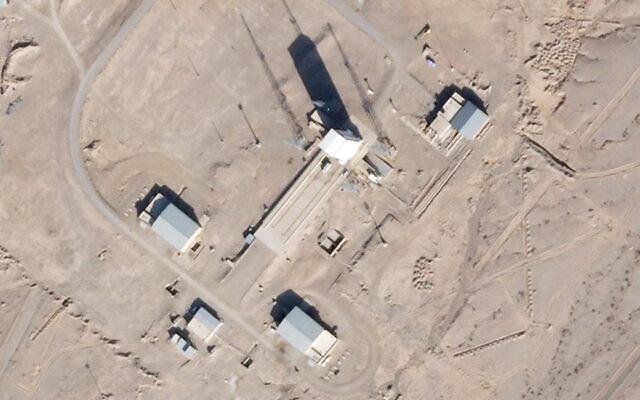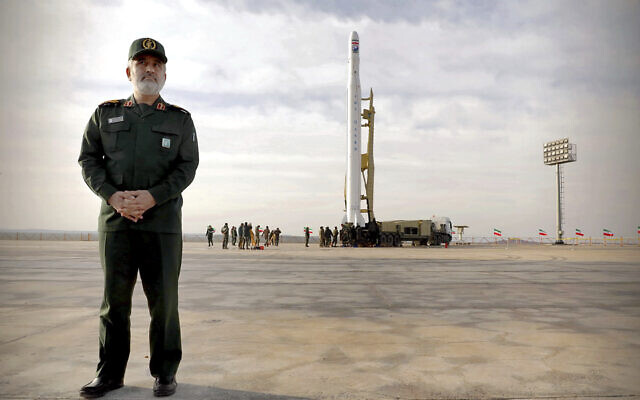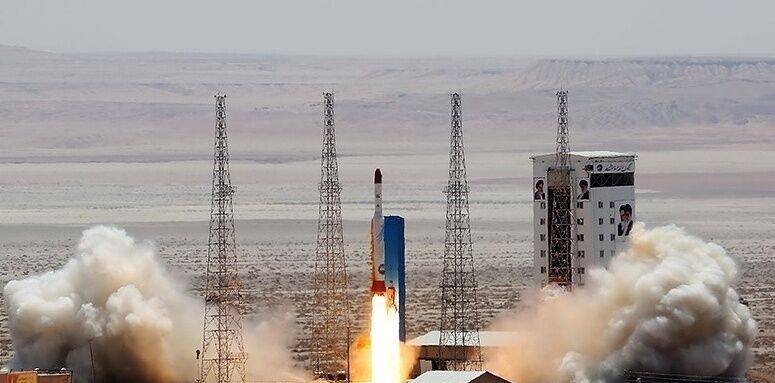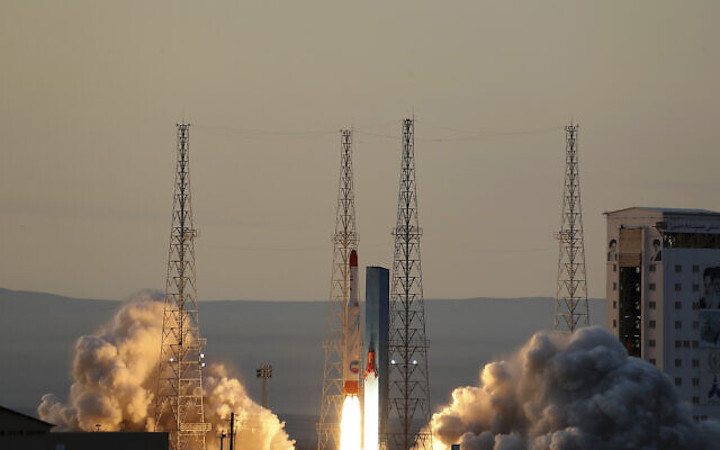France on Friday condemned Iran’s launch of a rocket the day before, amid negotiations in Vienna to revive a 2015 nuclear deal between world powers and the Islamic Republic.
“These activities are all the more regrettable as they come at a time when we are making progress in the nuclear negotiations in Vienna,” the French foreign ministry said.
On Thursday, Iran said it launched a rocket with a satellite carrier bearing three devices into space.
But on Friday, Ahmad Hosseini, an Iranian defense ministry spokesman, revealed that the rocket failed to put its three payloads into orbit after the rocket was unable to reach the required speed, according to the news agency.
“For a payload to enter orbit, it needs to reach speeds above 7,600 (meters per second). We reached 7,350,” he said in a documentary broadcast on state TV.
On Thursday, Hosseini had said, “The performance of the space center and the performance of the satellite carrier was done properly.”
Hosseini identified the rocket as a Simorgh, or “Phoenix,” rocket that sent up the three devices 470 kilometers (290 miles). It was not clear when the launch happened or what devices the carrier brought with it.
France’s foreign ministry said the launch was in breach of UN Security Council resolutions, Reuters reported.
“We call on Iran not to launch further ballistic missiles designed to be capable of carrying nuclear weapons, including space launchers,” the ministry said.
Previous launches have drawn rebukes from the United States. The US military did not respond to requests for comment on Thursday’s announcement from Iran. The State Department, however, said it remains concerned by Iran’s space launches, which it asserts “pose a significant proliferation concern” in regards to Tehran’s ballistic missile program.
Amid the missile launch and ongoing nuclear talks, Israel’s Kan public broadcaster reported Israel’s deputy chief of staff Herzi Halevi would be traveling to the US in the next few weeks for talks with his American counterparts, expected to largely focus on Iran.
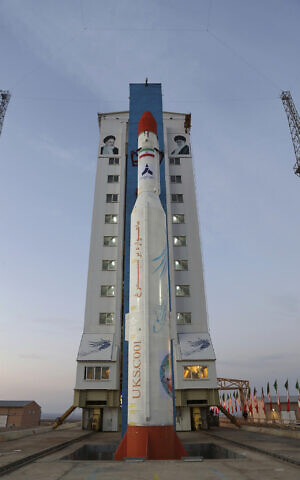
Iran’s civilian space program has suffered a series of setbacks in recent years, including fatal fires and a launchpad rocket explosion that drew the attention of former US president Donald Trump.
Iranian state media recently offered a list of upcoming planned satellite launches for the Islamic Republic’s civilian space program. Iran’s paramilitary Revolutionary Guard runs its own parallel program that successfully put a satellite into orbit last year. Hosseini described the launch announced Thursday as “initial,” indicating more are on the way.
Television aired footage of the white rocket emblazoned with the words, “Simorgh satellite carrier” and the slogan “We can” shooting into the morning sky from Iran’s Imam Khomeini Spaceport. A state TV reporter at a nearby desert site hailed the launch as “another achievement by Iranian scientists.”
The blast-offs have raised concerns in Washington about whether the technology used to launch satellites could advance Iran’s ballistic missile development. The United States says that such satellite launches defy a United Nations Security Council resolution calling on Iran to steer clear of any activity related to ballistic missiles capable of delivering nuclear weapons.
Space launch vehicles “incorporate technologies that are virtually identical to, and interchangeable with, those used in ballistic missiles, including longer-range systems,” the State Department said late Thursday. “The United States continues to use all its nonproliferation tools to prevent the further advancement of Iran’s missile programs and urges other countries to take steps to address Iran’s missile development activity.”
Iran, which long has said it does not seek nuclear weapons, maintains its satellite launches and rocket tests do not have a military component.
Announcing a rocket launch as diplomats struggle to restore Tehran’s atomic accord keeps with Tehran’s hard-line posture under President Ebrahim Raisi, a recently elected conservative cleric.
New Iranian demands in the nuclear talks have exasperated Western nations and heightened regional tensions as Tehran presses ahead with atomic advancements. Diplomats have repeatedly raised the alarm that time is running out to restore the accord, which collapsed three years ago when Trump unilaterally withdrew the US from the deal.
From Vienna, Iranian nuclear negotiator Ali Bagheri Kani told Iranian state TV that he hopes diplomats pursue “more serious work to lift sanctions” when nuclear talks resume next week. He described negotiations over the past week as “positive.”
Washington, however, has thrown cold water on Tehran’s upbeat assessments. State Department spokesperson Ned Price told reporters earlier this week that “it’s really too soon to tell whether Iran has returned with a more constructive approach to this round.”
Iran has now abandoned all limitations under the agreement, and has ramped up uranium enrichment from under 4% purity to 60% — a short, technical step from weapons-grade levels. International inspectors face challenges in monitoring Tehran’s advances.
Satellite images seen by The Associated Press suggested a launch was imminent earlier this month. The images showed preparations at the spaceport in the desert plains of Iran’s rural Semnan province, some 240 kilometers (150 miles) southeast of Tehran.
Over the past decade, Iran has sent several short-lived satellites into orbit and in 2013 launched a monkey into space. But under Raisi, the government appears to have sharpened its focus on space. Iran’s Supreme Council of Space has met for the first time in 11 years.
Quelle: The Times of Israel


